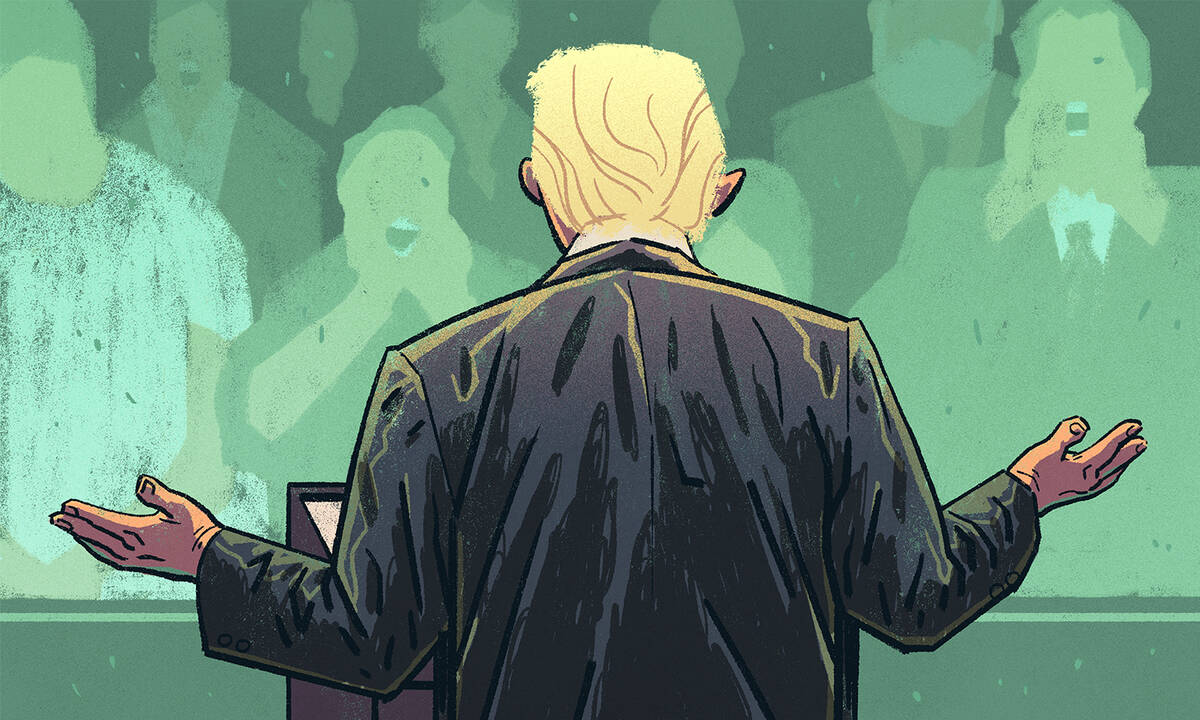Featured Faculty
James J. O'Connor Professor of Managerial Economics and Decision Sciences; (Center) Co-Director of the Global Poverty Research Lab (GPRL)

Michael Meier
With Donald Trump and Kamala Harris neck-and-neck in polls ahead of the United States presidential election, many are wondering how a second Trump administration would approach China. Trump’s stance on purely political issues is unclear. He recently remarked that Taiwan should pay for U.S. defense, hinting at an unwillingness to defend the island from attack by China, even as his former—and perhaps future—advisers advocate a large military buildup in Asia. But Trump’s economic approach to China is much less ambiguous: the two countries are competitors, and America must win.
In this sense, Trump and the Republican Party are not so different from U.S. President Joe Biden and the Democratic Party. The Biden–Harris administration kept most of Trump’s China tariffs and intensified the focus on the high-tech sector—particularly electric vehicles and batteries, which China has come to dominate. Politicians in both major parties have expressed concerns that the United States’ national security could be jeopardized should it be unable to manufacture its own clean tech, and that it could fall further behind in an industry that is important for the renewables-based economy of the future.
In his second presidential run, Trump has proposed more tariffs: a 10 percent tariff on every import, a 60 percent tariff on all Chinese imports, and a 100 percent tariff on all cars made outside the U.S. This worries many economists because these sweeping tariffs, along with Trump’s other tax proposals, could cost Americans $500 billion per year, a burden that would be borne disproportionately by lower-income households, which rely more on cheap imports.
Observers may wonder whether the resulting economic headwinds would prevent the U.S. from imposing such high tariffs were Trump to return to the White House. The answer is probably no. History suggests why the government would forge ahead with a policy agenda that would harm average Americans.
The U.S. has always valued being on the technological frontier. After World War I and World War II, when other Allied countries sought land and money as war reparations from Germany, the U.S. focused on securing German patents to boost American innovation. And it worked: access to German intellectual property after WWI significantly increased U.S. patents in organic chemistry, a field in which the Germans were world leaders at the time.
A more recent example was the U.S.–Japan trade war of the 1980s. Back then, many Americans viewed Japan’s rising market share in the semiconductor and automotive sectors as a threat to the U.S. economy. To address concerns over the “dumping” of these goods, American leaders pursued exceptionally aggressive policies against Japan.
The U.S. has always valued being on the technological frontier.
—
Nancy Qian
For starters, the Democratic administration of President Jimmy Carter requested that Japanese automakers build factories in the U.S. Following that, the Republican administration of President Ronald Reagan imposed 100 percent tariffs on $300 million worth of Japanese imports in 1987.
The two trade wars are similar. Back then, like now, the U.S. government sought to secure America’s economic supremacy, an agenda that commanded strong popular support across the political spectrum, despite large net losses to American consumers and firms. The tariffs imposed by the U.S. in both instances violated international rules set by the General Agreement on Tariffs and Trade and its successor, the World Trade Organization. Even the recent political rhetoric against China, which warns of future military conflict in the Taiwan Strait, echoes the Japan-bashing of the 1980s, which often harkened back to WWII.
But there are important differences between the two cases. Japan depended entirely on the U.S. for its military defense in the 1980s. American political leaders were therefore confident that any pressure campaign—whether reasonable or not—would ultimately be successful. There is no such assurance with China.
China’s ability to respond to U.S. demands is also limited by its domestic concerns. In 1990, per capita income in Japan and the U.S. was at a similar level, whereas Chinese per capita income is much less, currently around 17 percent of the U.S. level. The Chinese government has invested heavily in lifting its population into the middle class and establishing itself as a global leader in high-tech sectors, which will limit its room for maneuver.
At a time of huge political uncertainty, one thing is clear: the U.S. government will maintain its aggressive stance toward China, a policy that, as with Japan in the 1980s, has bipartisan support. But while Japan conceded to most of America’s demands, China may not be willing or able to be so obliging. Chinese and U.S. leaders will need to recognize each other’s aims and limitations if they want to avoid tremendous economic losses for their people.
*
This article originally appeared in Project Syndicate.